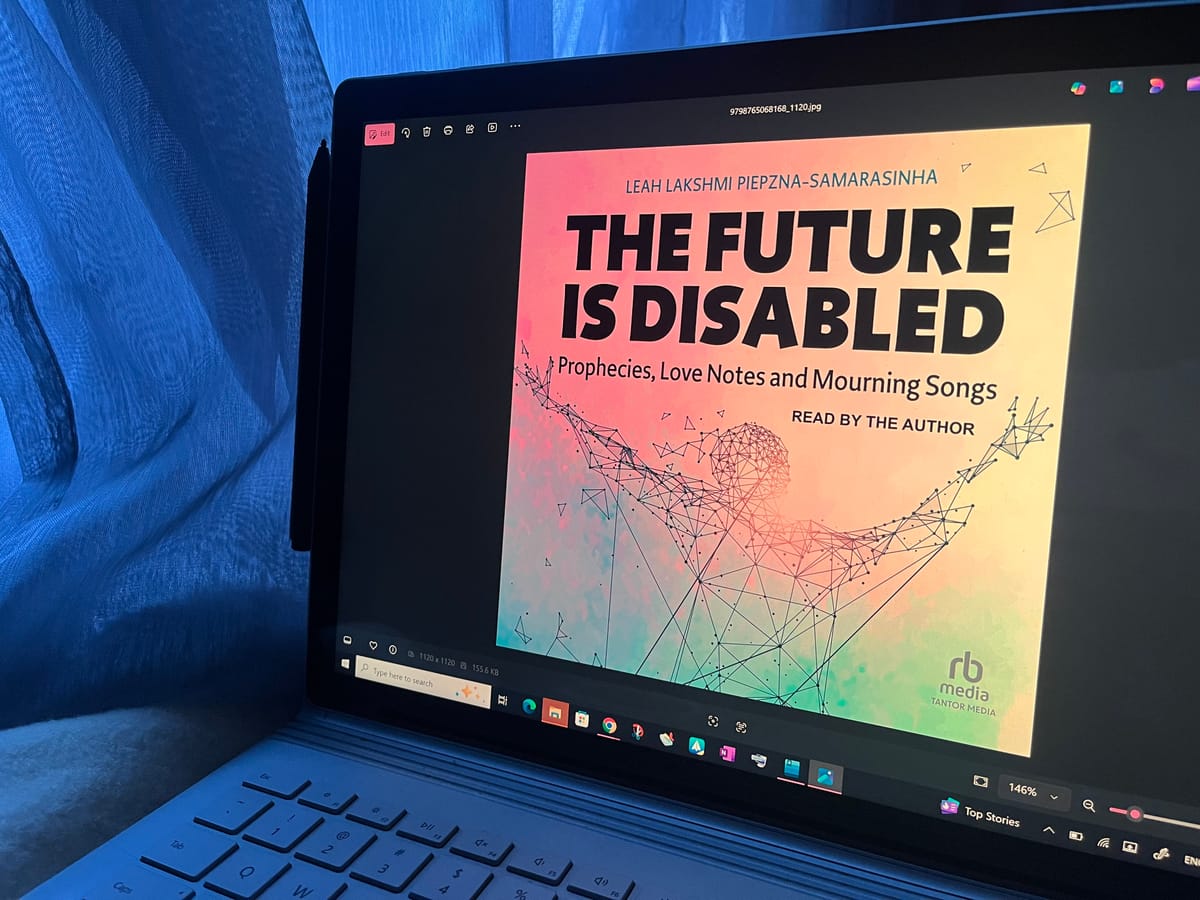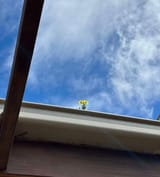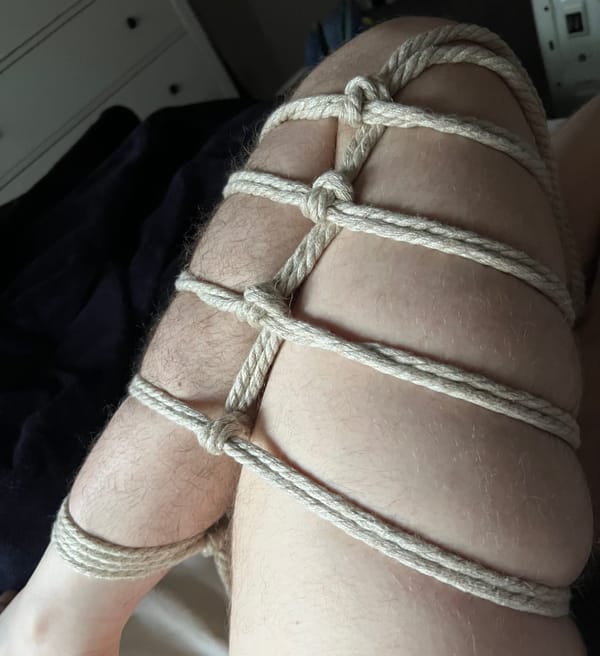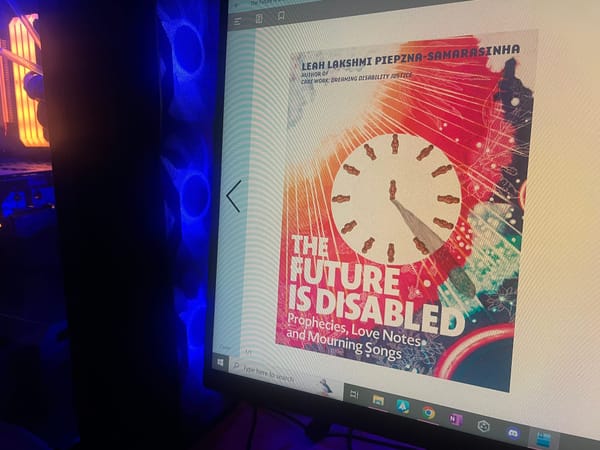On “The Future is Disabled” - Reflections and Sharing, Part 2
Wherein I reflect on different chapters in my new favourite book !!

Welcome to Part 2 (of 2) of me talking about The Future is Disabled by Leah Lakshmi Piepzna-Samarasinha! In this post, I’m going to be sharing specific reflections on some different chapters of the book.
If you missed blog post Part 1, where I give a general overview of the book, you can find it here:

Every chapter in this book is its own self-contained essay, so if there’s one that stands out to you but you don’t want to read the whole book, I’d encourage you to have a read just of that chapter! Feel free to shoot me a message if you need help accessing a copy of the book.
Chapter 2 - Interdependence Is Not Some Giant Living in the Hillside Coming Down to Visit the Townspeople: The Church of Show the Fuck Up, in Real Life
I had to include this chapter in this post just to show off its title, lmaoo. I mean, how good, right?!!!!
This chapter explores the complexities and challenges of care work, the ways in which care is so much more work and so much harder than surface level leftist - often abled - orgs make it out to be.
How do you care for others without sacrificing and compromising yourself? Where is the line between helping others and maintaining your own wellbeing? If you’re the only person someone has, how can you justify saying no to a request for help? How do you ask for help if you’ve spent your whole life being punished whenever you do? How do you know what your needs are if you’ve spent your whole life being forced to ignore the fact that you have any?
These are the questions this chapter explores, and I found the discussions Piepzna-Samarasinha presented around them as refreshingly real.
Chapter 3 - Disabled Grief Technologies: Disability Justice Future-Building in a Time of Mass Grief
LOVEDDDD this chapter. A excellent critique of the way abled, Western patriarchy treats grief as a one time event, in a similar way to an acute illness. The narrative goes like this: someone you love dies, you are overcome with grief for a socially acceptable time period of a month or so, and then you are expected to be “recovered” and back to your life as normal.
The reality, Piepzna-Samarasinha argues, is that grief is far better compared to chronic illness. Grief is not a single event. Grief doesn’t leave us. Not when it’s the death of a loved one, and neither when it’s the grief of climate change, genocide, intergenerational trauma or colonialism.
In a world of constant grief, Piepzna-Samarasinha argues that we should apply a chronic illness mindset to navigating grief, holding and caring for ourselves and each other wherever we are at on a particular day in the ongoing journey of our grief.
Chapter 8 - Twenty Questions for Disability Justice Art Dreaming: A Winter Solstice Present
I found this chapter really challenging, more so than any other in the book.
The chapter mainly consists of a long list of questions posed to the reader about their disabled creative practice, following a discussion of how so often disabled artists get pigeon-holed into doing explanatory access work with abled people and aren’t given time to actually make whatever queer, sick art they dream of.
Piepzna-Samarasinha encourages you to invest time into nurturing your creative/artistic practice by pondering and answering their offered questions.
As someone who still hasn’t come to terms with the grief of being unable to do the vast majority of artistic practices that I was doing before I became disabled, thinking about my disabled artistic practice was quite confronting and challenging. I feel like I am spending all my energy on just trying to get through the day and help my friends/community do the same, with art-making being something I can only do at a very small scale or spontaneously on the rare days when creative inspiration and higher energy levels both hit at once.
Being disabled art practice questions, Piepzna-Samarasinha's provocations do account for this type of situation, but for me even thinking about that in relation to myself was really difficult.
Chapter 9 - I Wanna Be with You Everywhere (And I Am): Disability Justice Art as Freedom Portal
Awesome chapter exploring the show I Wanna Be With You Everywhere (And I Am) at Performance Space New York in 2019 (show notes here) as a case study for making disabled, accessible theatre/events/community space. Many aspects of this event were practices I was already aware of as a disabled theatremaker, but one point stood out to me as not having cross my mind before: a cripping of time.
Piepzna-Samarasinha discusses how this show - a cabaret style event - would only have two or three performers each night, with each allowed to have their performance take up to ~30 minutes if desired, rather than the standard cabaret format of many performers all locked in to doing 5-10 minute sets.
This allowed both performers and audience members to ease into the act, to craft a piece that was able to breathe and acclimatise, rather than rushing through a condensed amount of content. For audience members that appreciate longer processing times, this allowed for greater enjoyment and appreciation of the show, as there was far less information overload than many short back-to-back items.
Additionally, there were long, 30-40 minute intervals between each performer, allowing time for both any accessibility needs to be better catered for (naps, toileting, etc) but also for the ephemeral community built on that particular night of the show to flourish.
Piepzna-Samarasinha explains that for many of us, especially disabled folk who may not often leave the house, the social elements of a night at the theatre can be just as valuable as the performance itself. Having intentional socialising time built into the night facilitated that social need.
Chapter 10 - Disability Justice Writing, the Beauty and the Difficulty
This chapter contained a great point about how hard it is to find writing on disability, because of how libraries and bookstores won't group books on disability together! When knowledge isn't organised in a way that is easily legible, so much can become lost.
Piepzna-Samarasinha shared an anecdote about how their publisher tried to get them to publish their first book, Care Work, under the genres "social studies / health / queer studies" - when really the primary genre of the book is obviously "disability studies" !!!! It made me sad to think about how much crip writing has been hidden away, scattered throughout endless other genres.
Chapter 15 - Home Is a Holy Place: The Sacred Organizing Spaces of Disabled Homes
I reallllllly loved this exploration of the sanctity of the disabled home. It resonated a lot with me as one of the predominantly-housebound crips!
It contained a vital discussion of how the freedom to determine our own home environment is both passively (via rent/housing prices, rental laws, broken elevators, etc) and actively (via institutionalisation) robbed of disabled people - and consequently how a key part of disabled future-building is in us creating disabled homes.
This chapter also pointed out how the term "house-bound" (or "wheelchair-bound", etc) implies - in a Western hyper-independence-is-to-be-aspired-to-above-all-else context - that being "bound" to something is bad. Maybe, Piepzna-Samarasinha argues, being bound doesn't have to be bad. Maybe it can be wonderful to be rooted in place, to be in relationship with your home or your mobility aid, to have something that is yours. Maybe being in a 24/7 D/s relationship (my words lol) with your home can be beautiful and healing.
Chapter 16 - Loving Stacey: An Honor Song
This chapter is a gorgeous reflection on the life of the late Stacey Park Milbern, a beloved disabled comrade of Piepzna-Samarasinha. They touch on many aspects of Stacey's life, beliefs and teachings within the disability justice movement (including unconditional disabled love!!!), but the one that I found most thought-provoking were Stacey's words on ancestorshop:
I think about crip ancestorship often. It is tied to crip eldership for me, a related but different topic. So many disabled people live short lives, largely because of social determinants of health like lack of healthcare, housing, clean air and water, or having basic needs met …
I do not know a lot about spirituality or what happens when we die, but my crip queer Korean life makes me believe that our earthly bodyminds is but a fraction, and not considering our ancestors is electing only to see a glimpse of who we are. People sometimes assume ancestorship is reserved for those of biological relation, but a queered or cripped understanding of ancestorship holds that, such as in flesh, our deepest relationships are with people we choose to be connected to and honor day after day.
Ancestorship, like love, is expansive and breaks manmade boundaries cast upon it, like the nuclear family model or artificial nation state borders …
I believe that our ancestors laugh, cry, hurt, rage, celebrate with us. Most importantly, I believe they learn as we are learning, just as we learn from them. We grow knowledge and movements with them. We crip futurism with them. We demand and entice the world to change the way things have always been done, with them. We change ourselves with them. They learn through us. When we become ancestors, we will also continue to learn.
- Stacy Park Milbern, "On the Ancestral Plane"
Starting with the above quote, Piepzna-Samarasinha further explains Stacey's teachings on ancestorship, and reflects on how their own relationship to Stacey and her teachings is changing now that Stacey herself has become an ancestor.
As a white person with very few current ties to my ancestors - neither the biological or spiritual kind - this section was definitely a valuable and thought-provoking read for me.
I also found this chapter acted as a great companion or follow-up to Chapter 2. Where Chapter 2 discussed more generally how one can go about doing disability justice work and the challenges around doing that as a disabled person, this chapter explained how Stacey went about doing this work in her own life. A kind of "case study" in a way but, like, not as some type of scientific dehumanising bullshit, instead as a tribute - an honor song - written by someone who loved her.
Stacey's presence is felt strongly throughout the entirety of this book, as Piepzna-Samarasinha frequently mentions her work and experiences they shared together. So having a chapter dedicated to her as we neared the end of the book really felt right.
Chapter 17 - Wild Disabled Joy: Disabled Pleasure Activism
I would recommend this chapter to anyone, but especially to disabled folk who are trying to work out where the heck pleasure and joy fit into all of the suffering and fighting that is existance and resistance.
This chapter had a lot of sexy nuance discussing intersections of class, race and disability when it comes to work, rest and pleasure - who does society allow to rest? to experience pleasure? who is forced to rest anyway despite not being allowed? why is society so scared of disabled pleasure? how have BIPOC folk been resting and creating joy for themselves throughout generations of ongoing violence? what can we learn from those who've come before us?
All excellent questions this chapter explores.
Aughhhh!! My eyes hurt !!!!! bluuuuurrrrrryyyyyyyyyy. so much brain power needed to finish this blog post about a book I read many months ago!!!
I wrote most of it as I was reading or soon after I finished, but there were a couple sections I wanted to add in that I hadn't done yet so - we persisted! probably should put the computer away now though, haha.
Thank you for reading my thoughts on this excellent book! Let me know if there's a chapter that stands out that you'd like to have a read of :).
PS - ALSO! When I was reading this book, I was thinking it'd be so awesome to have a book club where we choose a non-fiction book we're all interested in where each chapter is kind of stand alone like this and everyone reads a chapter. Then, we all come together and share what we learned/found interesting our assigned chapter! Could be a great way to learn more things or engage with non-fiction books of interest without having to read massive amounts? Let me know if this is something you'd be keen to participate in!
Much love,
Writer Pi





